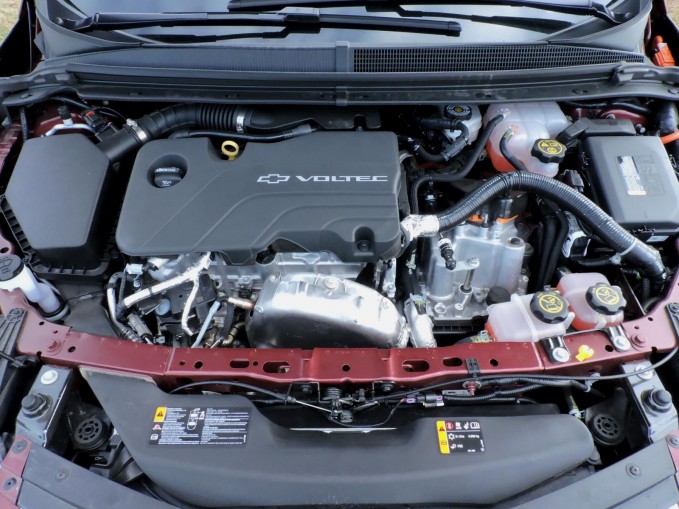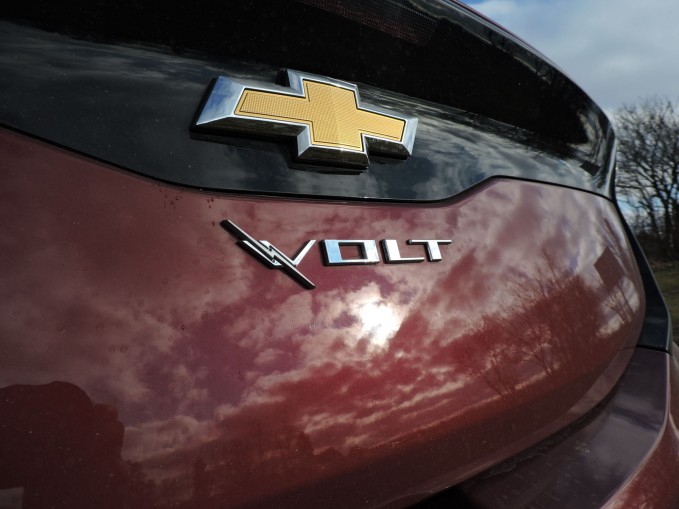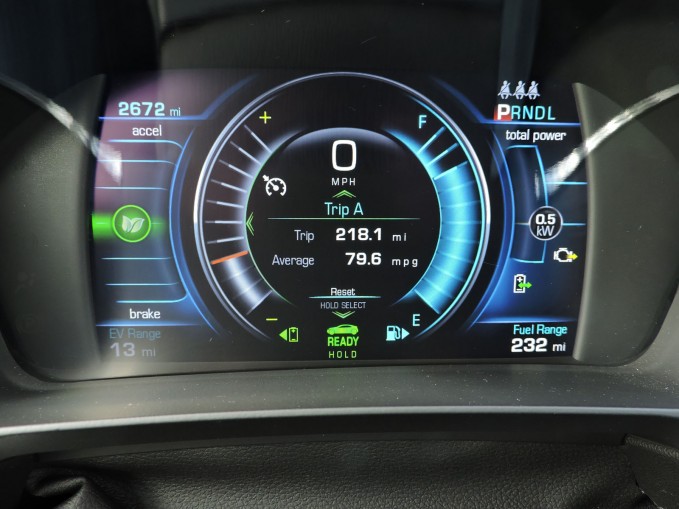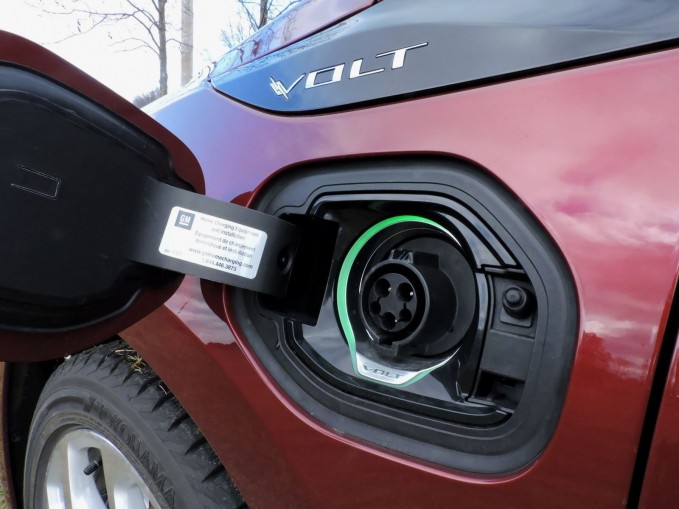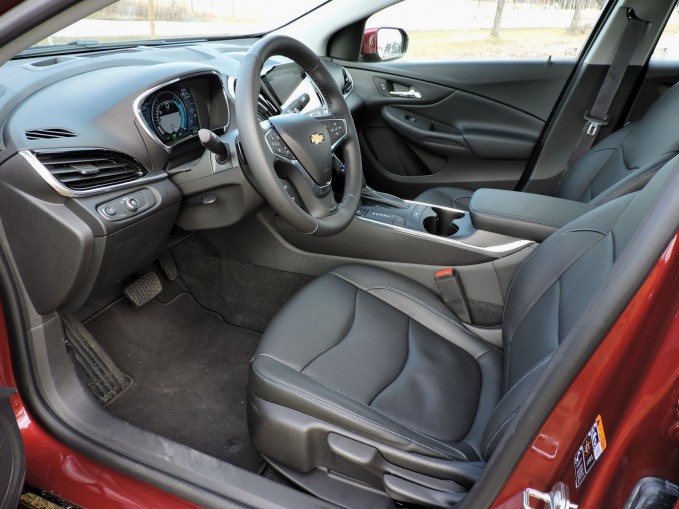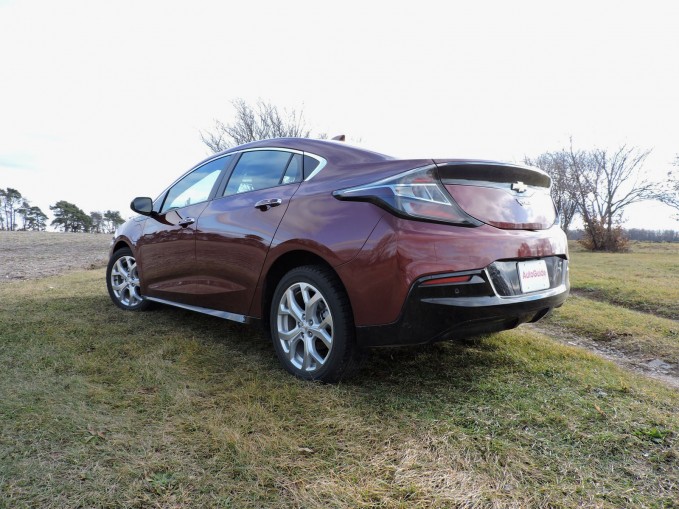Fifty three miles of official range.
That’s the figure quoted everywhere when referencing the 2016 Chevrolet Volt. An impressive number, 53 miles should allow most commuters a trip to and from work on a single charge of electricity. And with the Volt having a range extending gasoline engine, it’s the perfect combination of electric city commuter and long-range weekend getaway vehicle.
But does it work as advertised?
Rather than get into all the gooey details about the 2016 Chevrolet Volt, I’m going to focus on how it performs in the real world. Besides, you can read a very in-depth review of the 2016 Chevrolet Volt here.
As a quick refresher, the 2016 Volt utilizes 18.4-kWh battery system that is 21 pounds lighter and features fewer cells than the first-generation Volt. The range extender engine has grown to a 1.5-liter four-cylinder unit producing 101 horsepower. Turning the Volt’s front wheels is what Chevrolet refers to as a 110-kW twin-motor arrangement that makes 149 hp and an impressive 294 lb-ft of torque. Since this isn’t a conventional hybrid, there is no combined power figure – the electric motor’s output is the car’s power figure.
The Feel Behind the Wheel
I’ve always like the Volt because it drives like an ordinary car. No electric vehicle (EV) or hybrid quirks. Just a car that accelerates, brakes and corners like a compact car. Revolutionary when the it was introduced, the problem for Chevrolet is a lot of the Volt’s competition like the Kia Soul EV and Volkswagen e-Golf are catching up and offering many of the same positives that the Volt does.
For the second-generation Volt, Chevrolet set out to improve its EV abilities while also closing the gap between it and conventional compact cars. Top speed may still be a low 98 mph, but the zero to 60 time is now a respectable 8.4 seconds. What really counts though is how much more usable the Volt’s power is than an efficient compact car or dedicated hybrid. It delivers an avalanche of torque in a smooth, fluid way that only an all-electric vehicle could match.
SEE ALSO: 2016 Chevrolet Volt: Interesting Facts You Need to Know
Around town, the Volt feels positively lively. Even with winter tires installed, the car wants to break the front tires loose in the snow since there is so much off-the-line thrust. And the best part is, even when the battery is depleted and the car switches over to gasoline power, the Volt’s driving characteristics do not change, since the electric motors still power the front wheels. The gas engine does make a bit of noise when operating, but it lacks any disturbing vibrations.
Regen on Demand
A trick feature that’s popping up on more and more on hybrids and EVs is regenerative braking on demand. In the 2016 Volt, the left paddle behind the steering wheel controls this function and applies maximum regen braking without applying the conventional brakes. It allows drivers to maximize the amount of energy recaptured during deceleration without excessive loss caused by the car’s regular brakes.
The regen paddle helps with extending the Volt’s electric range. When used constantly and consistently, I added about 5 miles to a charge compared to when I didn’t use it at all. The problem is that the regen paddle is an on/off switch. There’s no way to modulate the amount of regen braking that’s being applied. It’s either full braking power or none at all. It makes smooth driving near impossible and may cause some passengers to complain of nausea after a while. It would be great if Chevrolet installed the modular regen paddle that applied as much regen braking as pressure that’s applied to paddle.
Chevrolet did nail the blending of regen braking with conventional braking, though. After nearly 600 miles behind the wheel, I found the Volt has one of the most seamless two-stage braking systems I have ever sampled. It really feels like only conventional braking is being applied. And while on the topic of conventional, the ride quality of the Volt is smooth, controlled and equal to that of the best compact cars on the market.
Real-World Range Testing
Now on to what everyone is waiting for; how was the range in real-world conditions? Before I get to that, let me preface a few things. For starters, my week of testing with the Volt was at the beginning of winter and temperatures bounced between an EV-unfriendly range of 39F to 47F. And since it was winter, the Volt’s ultra-efficient, low-rolling resistance tires were swapped out for some aggressive winter rubber.
My first full charge was during a rush hour commute downtown in stop and go traffic that produced a total 44.9 miles before the battery ran out. So with weather and tire conditions taken into account, that seems right about on par for the 53 mile claim. My next drive on a full charge included mixed driving with no traffic and I was only able to achieve 38.9 miles of distance before the battery was depleted. During this drive, I did not use the regen brake paddle at all and my range appears to have suffered for it.
On my third charge, I stuck to back roads, drove as carefully as possible and utilized the regen paddle at every chance I could. The result was 55.9 miles of all electric range – in the winter, on winter tires. Impressive.
For my final test, I loaded up my family of three and set out across town on a mixed driving excursion. Our first charge utilized the regen paddles and encountered some rush hour traffic, giving us 41.2 miles before the juice ran out. Our second drive was traffic-free and I avoided the paddles due to complaints on the jerky ride from my passengers. Here, I saw my worst observed range of just 36.2 miles.
And When the Battery is Empty
Not able to consistently replicate the Volt’s electric range, I thought maybe I’d be able to average the gasoline engine’s claims of 42 mpg. Again, I came up a bit short mostly due to weather, tires and freeway cruising speeds of 75 mph. Still, I would consistently see averages around 35 mpg, which matches that of the most fuel efficient regular compact cars like the Honda Civic and 2.0-liter Mazda3.
SEE ALSO: Chevrolet Volt: 2016 AutoGuide.com Car of the Year Nominee
So don’t expect Prius-like levels of efficiency when operating the Volt on its gasoline engine, but also don’t expect the Prius’ lethargic, joyless driving experience. And when electric charges are thrown into the mix, the Volt still uses less gas overall than a Prius when charged between uses. Over seven days and 600+ miles of driving, I averaged 63.6 mpg with the Volt. That’s a breakdown of about 60% of the time spent using gasoline and 40% of the time on electric power.
The View from Inside
The 2016 Volt now seats five people – sort of. Unlike the previous Volt that only sat four people, the new car has a fifth position in the middle of the back bench. But that middle passenger has to spread eagle around two cup holders and heated seat buttons that protrude from the center console. It’s not a comfortable place for anyone to spend much time.
With a scant 35.8 inches of headroom in the back, the rear seats have very deep cushions to allow taller passengers to fit back there. Although my 6’1” frame does fit back there, getting a rear-facing child seat in and out of the back can be difficult, as the roof angles in towards the door as well, which leaves a smallish opening.
The interior of the Volt is much improved compared to the outgoing model and is quite stylish. It no longer is trying too hard to look futuristic; it just looks like it should for a near $40,000 car. My only complaint is the bottom door panels that were already showing some scratches. But that’s forgivable, since keeping the price in check for the technology-laden Volt meant money had to be saved somewhere.
The Verdict: 2016 Chevrolet Volt Premier Review
The Volt proposition still comes down to perspective and personal needs. Some may find a price of $40,450 after destination charges as tested for a loaded Premier a bit steep for a compact, front-wheel drive car, while others will consider it a bargain for a one-solution, electric car that won’t give you range anxiety.
Even if my mileage results fell a bit short, the Volt still offers impressive range and remains my personal favorite hybrid or electric vehicle. It combines the best of both worlds, offering gas-free commutes and weekend getaways while still behaving like a regular compact car.
Discuss this story on our Chevrolet Volt forum







